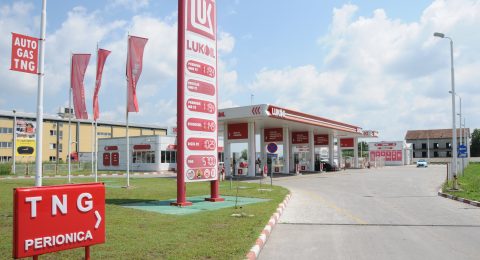The oil and gas industry is focusing on exploring new energy efficiency methods while seeking to save costs and reduce the harmful emissions released during operations. Since heat is essential for the oil and gas industry, heat exchanger technology is one of the modern innovations that can help the industry’s operators achieve this target. It has a critical role in improving energy efficiency among all production processes of the oil and gas industry as well as ensuring the safety and reliability of operations.
Wider View on Heat Exchangers Equipment
According to an article published by Ifsolution, a heat exchanger is a device that is designed to transfer heat between two media. It explained that “one medium is process fluid and the other is a heat-absorbing coolant.” These media can be gas or liquid or a gas or a combination of both, an article published by ipieca, elaborated. The media may be separated by a solid substance to avoid mixing, or it may be in direct contact but the majority of the heat exchanger types have separating barriers between them. This equipment removes the heat produced during the industrial process to cool it and prevent any up-normal rise in temperature during production. It also can be used to produce heat for certain production processes when a higher temperature is needed.
Heat Exchanger Classification
Heat exchangers are classified into three categories according to the method of heat exchanger interaction, the physical state of fluids and the design and flow of the heat exchanger fluids. The direct heat exchanger method places the fluids in direct contact within a tubing system. This method is not preferred when the two fluids are volatile, which is risky. The other method is the indirect contact exchanger; which separates the two fluids with a barrier.
Also, the types of heat exchangers may vary according to the state of the fluids; such as gas-solid exchangers, liquid-gas exchangers, and liquid-solid exchangers. The last classification for the exchangers depends on flow and form of fluids; these include parallel flow exchangers, counter-flow exchangers, and cross-flow according to the direction of the flow between the two fluids.
Paving the Way for Oil & Gas Efficient Operations
As mentioned previously, heat exchanger technology plays an effective role in the oil and gas industry. It provides several positive functions within the operation processes to ensure its efficiency and keep it safe. According to an article released by the Mechanical Engineering World via linkedIn platform, this technology enables temperature control by regulating temperatures transferred between the different fluids to be implemented at suitable temperature ranges. Additionally, it enables condensation and vaporization processes needed during industrial operations.
Also, heat exchangers allow operators to achieve energy efficiency and reduce costs accordingly, as they facilitate the recovery and reuse of waste heat and the heat produced from byproducts of oil and gas operations. Moreover, heat exchanger equipment can be used to cool down some operations to keep the stability and safety of equipment and products, especially during refining operations and natural gas liquefication. Another benefit of heat exchangers for oil and gas is that they are designed with materials resistant to corrosion which reduces maintenance costs and time.
The most important thing is that it helps in reducing harmful emissions and achieving sustainability goals as it enables operations to be carried out with less energy consumption in addition to facilitating the recovery of waste heat. Besides that, it enables process integration by transferring heat between the different phases of the production process.
Applications in Oil & Gas
There are different types of the heat exchangers in the oil and gas sector, which can be used in different phases of the operation. One of these types is Shell and Tube Exchangers, which consists of a group of tubes covered with a pressurized outer shell. This equipment channels a fluid mainly from the hot process through the smaller tubes and the other through the outer shell. This type is the most prevalent in oil and gas industry, according to an article released by offshore technology.
Another type is the Evaporators and Boilers, which go through two phases of heat transfer process and changes the physical state of one or more of the fluids. Also, there are Double Pipe heat exchangers, which are comprised of two concentric pipes in which a smaller diameter pipe is included inside a larger one which brings two fluids closely, an article issued by ifsolutions mentioned. Moreover, Plate Heat Exchangers, consist of several thin plates, are set together in stacks that create channels where fluids interact.
Also, there are several applications for heat exchangers in the petroleum industry such as hot oil/heat transfer systems, fuel gas conditioning skids, cold ammonia flow control, lube oil systems and SCR units. Other applications for heat exchangers include exchangers on utility fluids, exchangers on cleaning in place, production of hot water, fuel heaters and kettle, an article published by barriquand stated.
In conclusion, advanced heat exchanger technologies hold immense potential to revolutionize the oil and gas industry. These innovations are not merely components; they are strategic enablers that drive progress across several key areas. These technologies play a critical role in achieving energy and operation efficiency, optimizing production, reducing costs, and achieving sustainability.








